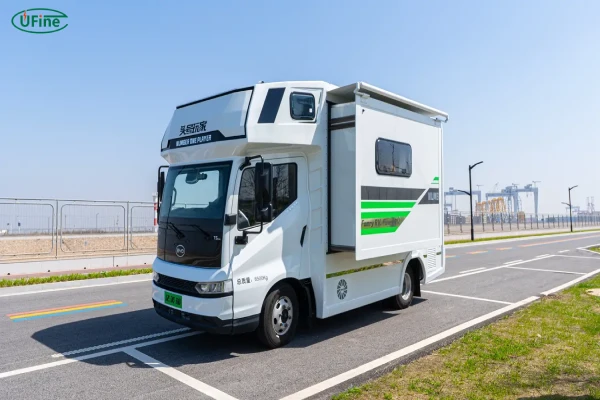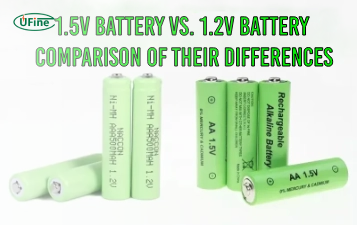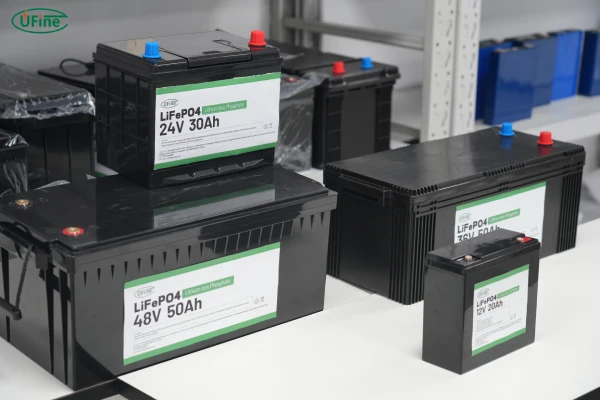
- Part 1. Understanding the capacity of a 200Ah lithium battery
- Part 2. What affects the duration of a 200Ah lithium battery?
- Part 3. What can I power with a 200Ah lithium battery?
- Part 4. Estimating the running time of a 200Ah lithium battery
- Part 5. Comparison of 200Ah lithium battery with other capacity batteries
- Part 6. Suggestions for choosing the right capacity
- Part 7. Conclusion
When considering energy needs, the 200Ah lithium battery is often a go-to choice for many applications. But you might be wondering: how long can this battery actually last? In this guide, we’ll explore the ins and outs of the 200Ah lithium battery, including its capacity, factors that affect its duration, and practical tips for usage. So, let’s dive in!
Part 1. Understanding the capacity of a 200Ah lithium battery
Ufine Battery 24 V 200Ah LiFePO4 Battery 170220420
To grasp how long a 200Ah lithium battery can last, we first need to understand what “Ah” means. Ah, or ampere-hours, is a unit that measures a battery’s capacity. In layman’s terms, it indicates how much current a battery can deliver over time. A 200Ah battery can theoretically provide 200 amps for one hour, or 100 amps for two hours, and so on. This makes it a powerful option for various applications.
Lithium batteries are particularly popular for their efficiency and longevity. Unlike traditional lead-acid batteries, lithium batteries have a much higher energy density, meaning they can store more energy in a smaller, lighter package. This characteristic makes the 200Ah lithium battery perfect for applications like solar energy storage, recreational vehicles (RVs), and electric boats, providing you with reliable power wherever you go.
Why Choose Lithium?
Lithium batteries outperform older technologies in several ways:
- Longer Lifespan: They can last for thousands of charge cycles.
- Faster Charging: They recharge more quickly than lead-acid batteries.
- Deeper Discharge: You can use more of the stored energy without damaging the battery.
These benefits make lithium batteries an appealing choice for modern energy needs.
Part 2. What affects the duration of a 200Ah lithium battery?
Now that we understand the capacity, let’s discuss what impacts how long a 200Ah lithium battery will last. Several factors come into play:
1. Load Demand
The load refers to how much power your devices consume. If your battery is powering a device that draws a lot of current, it will discharge faster. For example, if you are running a device that uses 50 amps, your battery will last approximately four hours:
Conversely, if you’re using a device that draws only 10 amps, the battery could last up to 20 hours. Understanding your load is crucial for managing battery life.
2. Battery Age and Health
Like all batteries, lithium versions can degrade over time. A well-maintained 200Ah lithium battery can last several years, but factors like temperature, charge cycles, and general usage can affect its health. As batteries age, their ability to hold a charge diminishes, leading to shorter runtimes.
3. Temperature Conditions
Temperature is a significant factor affecting battery performance. Lithium batteries operate best in moderate temperatures, typically between 20°C to 25°C (68°F to 77°F). Extreme cold can reduce battery efficiency, while excessive heat can lead to overheating and potential damage. If you want to get the most out of your battery, try to keep it within this optimal temperature range.
4. Depth of Discharge (DoD)
The depth of discharge refers to how much of the battery’s capacity is used before recharging. Lithium batteries can handle deeper discharges, unlike lead-acid batteries, which can be damaged if discharged too much. However, regularly discharging a lithium battery below 20% can shorten its lifespan. To maximize longevity, aim to recharge when the battery is around 30% to 40% capacity.
Understanding these factors will help you manage your 200Ah lithium battery effectively.
Part 3. What can I power with a 200Ah lithium battery?

You might be wondering what exactly you can power with a 200Ah lithium battery. The good news is that this battery size is versatile and can handle a wide range of devices:
- Recreational Vehicles (RVs): Power your lights, refrigerator, air conditioning, and entertainment systems without worrying about running out of juice.
- Electric Boats: Keep your navigation systems, lights, and other electronics running smoothly on the water.
- Solar Power Systems: Store energy generated from solar panels and use it when the sun isn’t shining.
- Home Backup Systems: Provide emergency power to essential appliances during outages, ensuring you stay connected and comfortable.
The 200Ah lithium battery can be your reliable companion in various situations, from camping trips to home energy solutions.
Part 4. Estimating the running time of a 200Ah lithium battery
Calculating how long a 200Ah battery will last is essential for planning your power needs. As mentioned earlier, you can use the formula:
Running Time (hours)=Battery Capacity (Ah)/Load (A)
Example Calculations
Powering a 12V Refrigerator: If your fridge draws 10 amps:
Running Time=200Ah/10A =20 hours
Running Lights and Electronics: If your total load is 25 amps:
Running Time=200Ah/25A =8 hours
Charging Devices: If you’re charging devices that collectively draw 5 amps:
Running Time=200Ah/5A =40 hours
Key Points to Remember
- Always monitor your load to prevent unexpected shutdowns.
- Keep track of the battery’s depth of discharge for optimal lifespan.
- Be aware of temperature effects on performance.
Part 5. Comparison of 200Ah lithium battery with other capacity batteries
When choosing a battery, it’s helpful to compare the 200Ah lithium battery with other capacities. Here’s a quick look at how it stacks up against some common options:
| Battery Capacity | Use Cases | Advantages | Precautions | Expected Usage Time |
|---|---|---|---|---|
| 200Ah Lithium | RVs, solar systems, backup power | Lightweight, deep discharge capability | Avoid extreme temperatures | 10-20 hours (depending on load) |
| 100Ah Lithium | Smaller RVs, camping gear | More affordable, lighter weight | Less capacity for high loads | 5-10 hours |
| 300Ah Lithium | Larger RVs, off-grid systems | Extended usage time | Higher cost | 15-30 hours |
| 200Ah Lead-Acid | Budget-friendly options | Lower upfront cost | Heavier, shorter lifespan | 5-10 hours |
Advantages of the 200Ah Lithium Battery
- Higher Efficiency: Compared to lead-acid batteries, lithium batteries maintain performance even when partially discharged.
- Longer Lifespan: They typically outlast lead-acid batteries, making them a better long-term investment.
- Lightweight Design: Easier to install and transport, especially in mobile applications.
This comparison can guide you in selecting the right battery for your specific needs.
Part 6. Suggestions for choosing the right capacity
Now, you may be asking yourself: is a larger capacity always better? Not necessarily! Here are some tips for choosing the right lithium battery capacity:
1. Assess Your Power Needs
Evaluate what devices you will be using and their total power requirements. This assessment will help you determine the appropriate capacity.
2. Consider Usage Frequency
If you plan to use your battery frequently, investing in a larger capacity might be worth it. A larger battery can handle more significant loads without discharging too quickly.
3. Weight Considerations
If you’re using the battery in a mobile application, such as an RV or boat, consider the weight. Larger batteries are heavier, which could affect your vehicle’s performance.
4. Budget Constraints
Larger capacity batteries often come with a higher price tag. Make sure your choice fits within your budget while still meeting your power requirements.
5. Future Needs
Think ahead! If you might expand your power needs in the future, it could be wise to invest in a larger capacity battery now.
By keeping these factors in mind, you can make an informed decision about the right capacity for your lithium battery.
Part 7. Conclusion
In conclusion, a 200Ah lithium battery offers a fantastic balance of capacity, efficiency, and versatility. Understanding how long it can last depends on several factors, including load, temperature, and battery health. By calculating running time and comparing it with other battery options, you can select the best solution for your needs.
Whether you’re off on an adventure in your RV, harnessing solar energy, or ensuring backup power at home, the right battery can make all the difference. With proper care and understanding, your 200Ah lithium battery can provide reliable energy for years to come.
Related Tags:
More Articles

1.5V Battery Vs. 1.2V Battery: Comparison of Their Differences
Compare 1.2V vs 1.5V batteries: voltage, usage, rechargeability. Best for remotes, toys, cameras. Discover which AA battery suits your device.
Recommended 10 Best Batteries For Smoke Detectors
Discover the best batteries for smoke detectors in 2025. Compare top 10 9V and AA options for long-lasting, leak-proof, and reliable smoke alarm power.
Triple A Battery Voltage: Everything You Need to Know
Learn how many volts are in a triple A battery (1.5V vs 1.2V), see AAA battery voltage chart, and compare chemistry, testing, and lifespan for 2025 devices.
9V vs AA Batteries for Fire Alarm: Which One Should You Use?
Compare 9V and AA batteries for smoke detectors. Learn which type provides better lifespan, voltage, and cost efficiency to keep your fire alarms reliable.
Flashlight Battery Size: Types, Choosing Tips and FAQs
Explore flashlight battery sizes with an easy chart. Learn what batteries small flashlights use and how to pick 18650, 26650, 14500, or CR123A cells.




